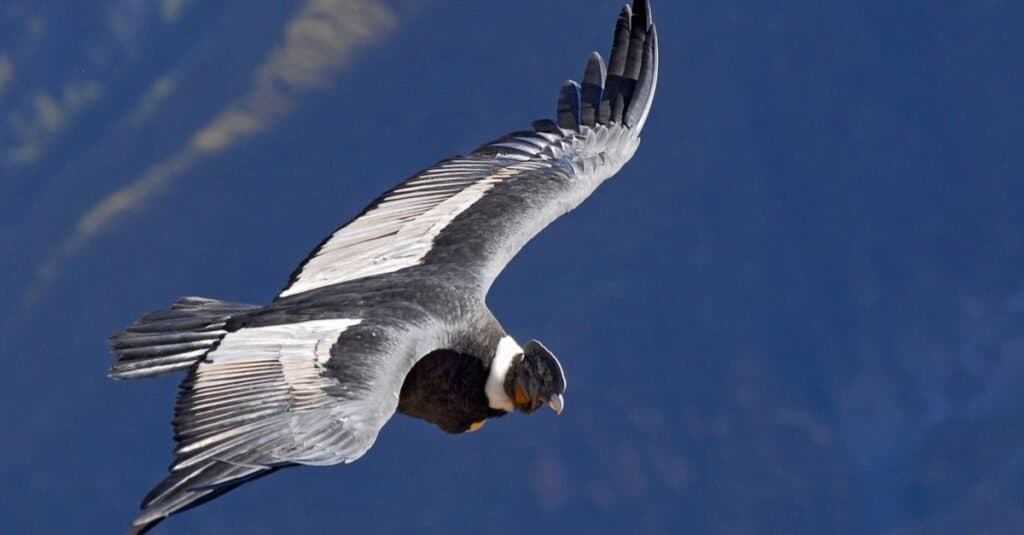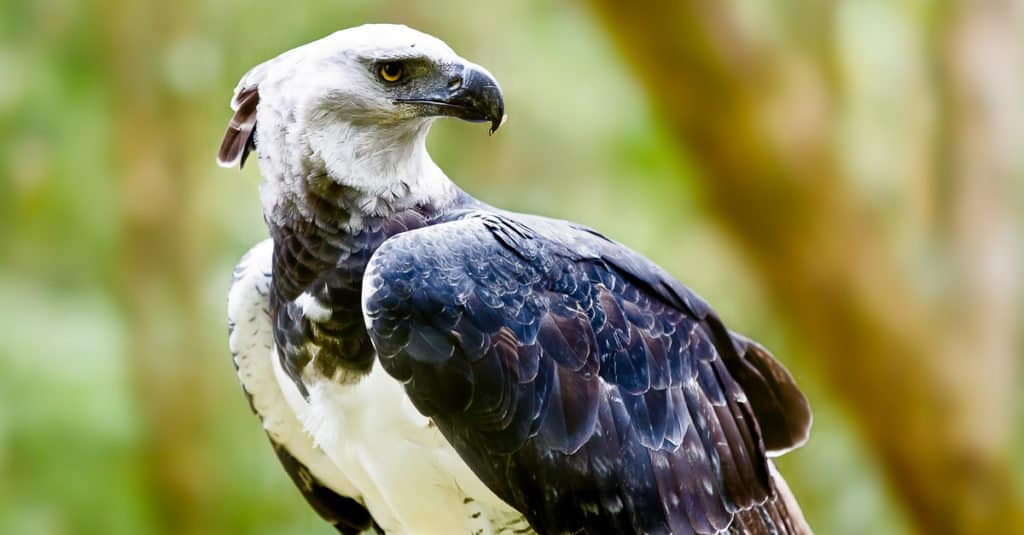South America is a vibrant, colorful continent filled with mountains and tropical rainforests teeming with plant and animal life. It is one of the most biodiverse regions in the world and features species found nowhere else. One of those creatures is the largest bird in South America. Discover all the fascinating facts about this giant bird, including where it lives, its diet, and the threats it faces.
What is the Largest South American Bird?

The greater rhea is the largest bird in South America.
©Ondrej Prosicky/Shutterstock.com
The greater rhea is the largest South American bird, standing five feet tall and weighing up to 66 pounds. It is also the largest native, extant bird throughout North and South America. The greater rhea is a flightless bird species that looks similar to an emu or an ostrich (although slightly smaller). In fact, it belongs to the Rhea genus, which contains the South American ostriches, a distant relative.
Greater rheas have grey or brown fluffy-looking feathers, with long legs and impressively long wings reaching eight feet long. Their average weight hovers around 50 pounds, and their height can vary from 4.7 to 5.7 feet. Males can occasionally reach over six feet tall and weigh over 80 pounds. These birds are primarily silent and relatively social. Greater rheas form flocks during the winter, and females participate in a polyandrous mating system. They mate with a male and deposit their eggs in his nest before moving on to the next. Males stay and protect the nests, which can contain upwards of 80 eggs.
Where Do Greater Rheas Live?
Greater rheas live in Argentina, Bolivia, Brazil, Paraguay, and Uruguay. They prefer to inhabit areas of lower elevation and avoid moist tropical rainforests. You can find them in grasslands, savannas, scrub forests, and chaparral. But they must stay near a water source during the breeding season. There is also a wild greater rhea population in Germany. They are not native to the country but thrive after escaping a farm and breeding in the wilderness.
What Do Greater Rheas Eat?

Greater rheas are omnivores.
©iStock.com/Foto4440
The greater rhea is an omnivore that eats seeds, fruit, insects, fish, small rodents, birds, and reptiles. It tends to eat tough plant matter and consume pebbles to help grind down food for easy digestion. Greater rheas are also coprophagous, meaning they eat fresh fecal matter of other rheas. This species is a natural pest control and is often utilized in the agricultural industry to eat invertebrates like locusts, grasshoppers, and cockroaches. They forage by slowly walking with their heads close to the ground, occasionally lifting them to scan their surroundings. And during the winter, they gather in flocks and fear near deer and cattle.
Are Greater Rheas Endangered?
Greater rheas are a near-threatened species, and Argentina and Uruguay populations are the most severely affected. Their species is declining due to overhunting and habitat loss. While they can help rid crops of pests, they are also seen as pests themselves. Farmers will often hunt and kill them because they eat crop plants, such as cabbage, chard, and bok choy. Grasslands are their preferred habitat, but the agricultural industry is converting much of it to farmland and ranchland, contributing to their decline.
What Are the Other Largest Birds in South America?
Discover the other largest birds in South America that come in a close second!
Jabiru

Jabiru can weigh up to 19 pounds.
©Rini Kools/Shutterstock.com
The jabiru is a large stork found in the Americas, from Mexico down to Argentina. They inhabit the continent’s savannas, coastal lagoons, and marshes and typically live in large groups. They are one of the largest birds in North and South America, reaching five feet tall, weighing 19 pounds, and featuring an eight-foot wingspan.
King Penguin

King penguins can weigh up to 40 pounds.
©fieldwork/Shutterstock.com
The king penguin is the second largest penguin species and is native to the South Atlantic and South Indian oceans. In South America, you can find them in Tierra Del Fuego, the Falkland Islands, and South Georgia. King penguins can weigh up to 40 pounds and grow three feet tall, reaching close to an adult male’s waist.
Andean Condor

Andean condors have a wingspan of ten feet.
©Cezary Wojtkowski/Shutterstock.com
The Andean condor is a huge vulture found in the Andes Mountains and pacific coasts in western South America. You can find them in Colombia and northwest Venezuela down to Tierra Del Fugo, where they live in the highest peaks, nest in rocky crags, and soar high over grasslands. The Andean condor is one of the largest flying birds in the world, weighing over 30 pounds and growing up to four feet tall, with an enormous wingspan of ten feet!
Harpy Eagle

The harpy eagle can weigh up to 20 pounds.
©MarcusVDT/Shutterstock.com
Harpy eagles are neotropical birds found throughout Mexico, Central America, and South America. They inhabit several South American countries, including Brazil, Ecuador, Colombia, and Venezuela. There are difficult to find in their natural habitats because they stay perched high in rainforest canopies. The harpy eagle can weigh up to 20 pounds and reach nearly 3.5 feet tall, with a 6.5-foot wingspan.
Up Next:
The photo featured at the top of this post is © iStock.com/Foto4440
Thank you for reading! Have some feedback for us? Contact the AZ Animals editorial team.







